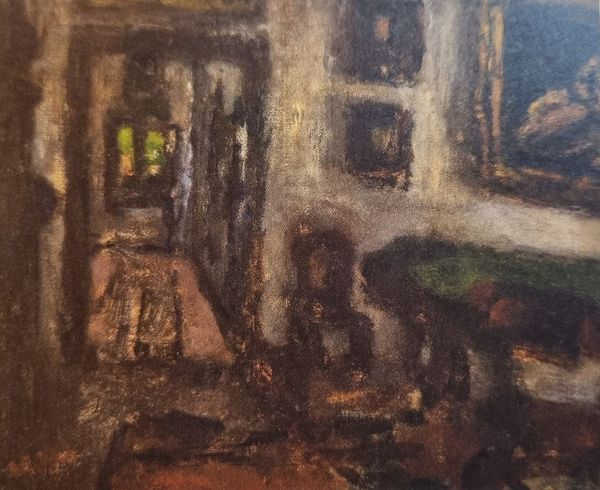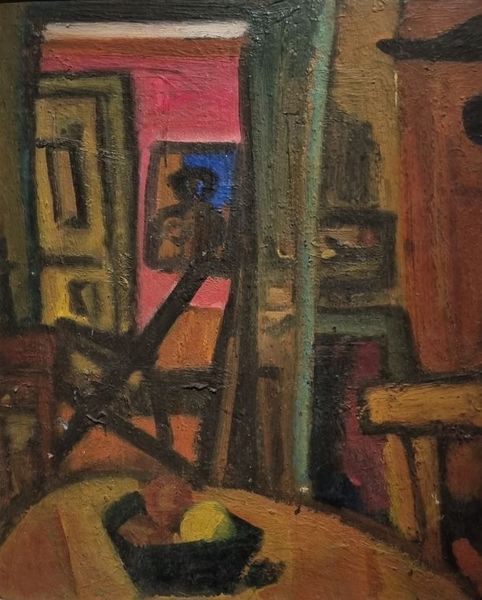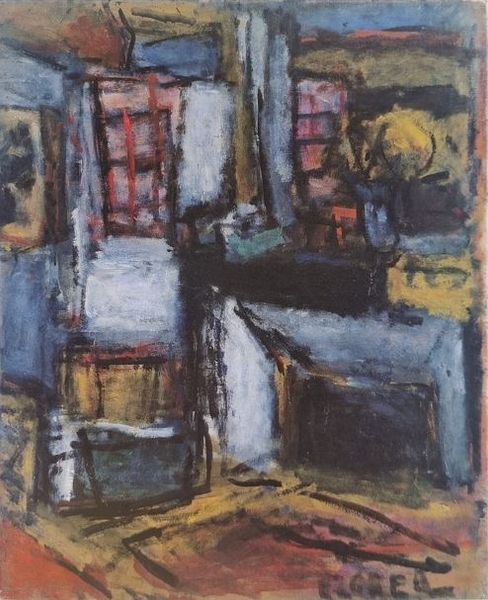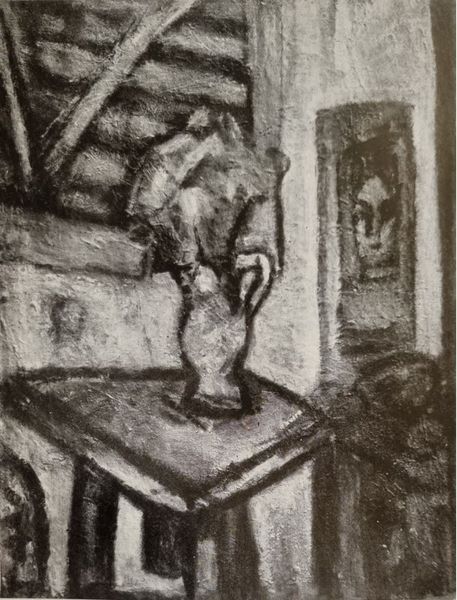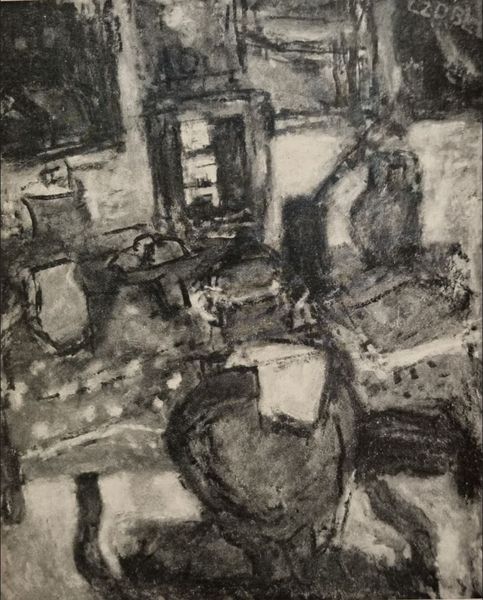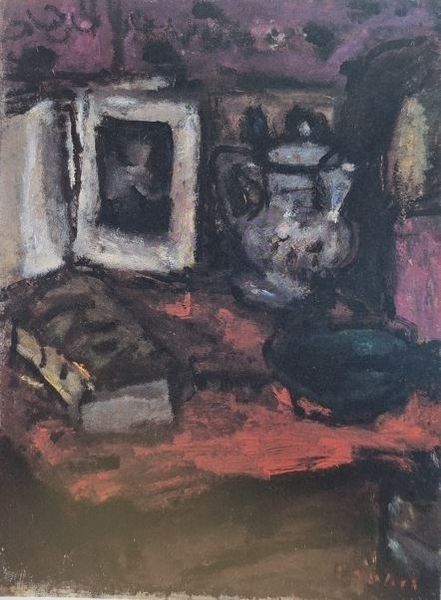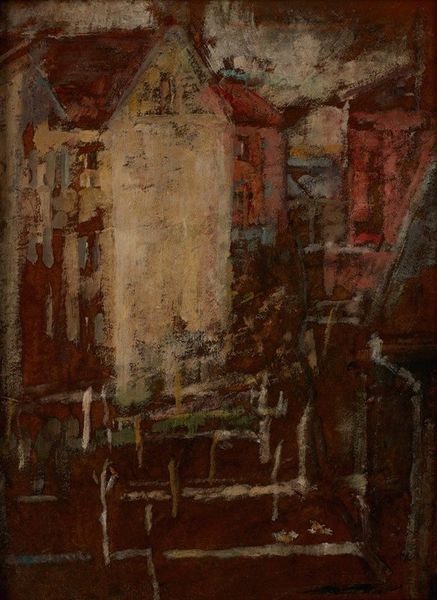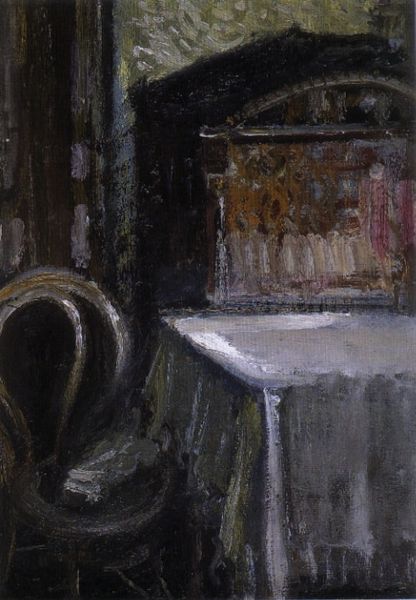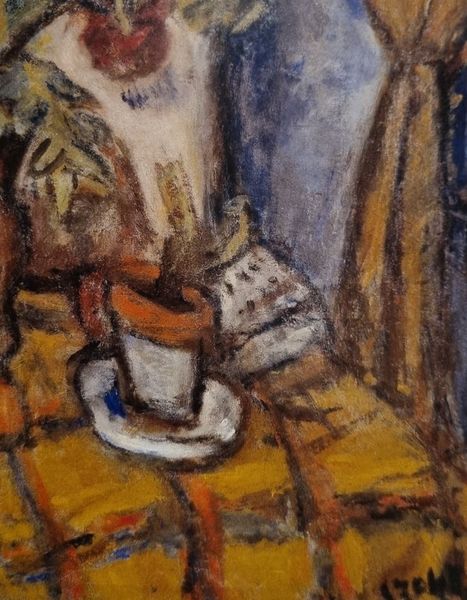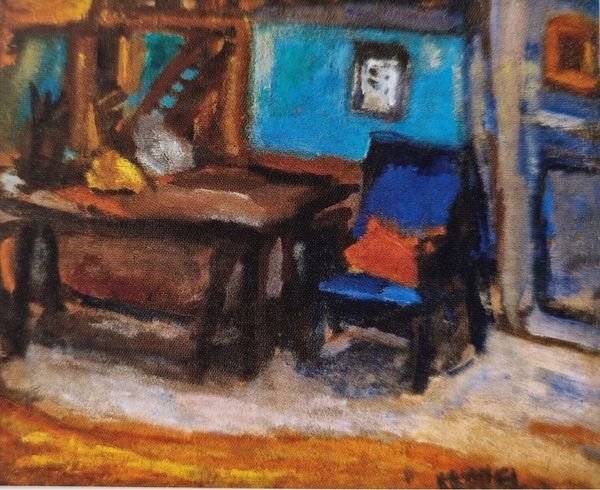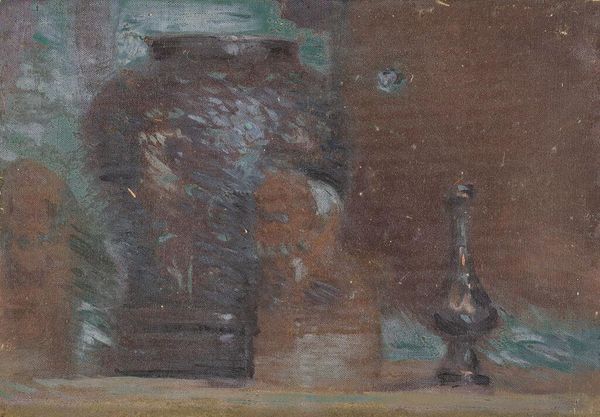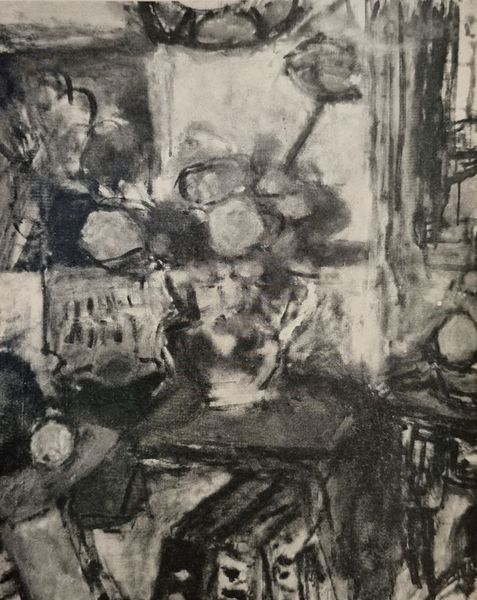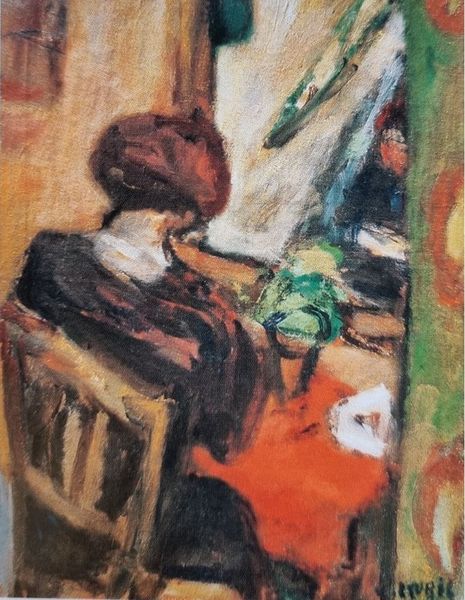
oil-paint
#
oil-paint
#
landscape
#
oil painting
#
acrylic on canvas
#
expressionism
#
cityscape
Copyright: Bela Czobel,Fair Use
Editor: Bela Czobel’s *Street of Berlin 1920*, painted in oil, is just captivating. The composition, with that looming structure dominating the background and those obscured figures in the foreground, gives me such a gloomy feeling. How do you interpret this work? Curator: That's an insightful first impression. What interests me about this piece is how Czobel, amidst the rise of Expressionism, presents a Berlin street. Notice the lack of clear details, how buildings and people melt into the brownish, dark environment. Do you think that anonymity is accidental? Editor: No, it feels intentional. Considering it’s 1920, after the first World War, maybe this represents the alienation or decay of urban life? It’s definitely not the lively Paris street scenes we’re so used to seeing from that time. Curator: Exactly. Czobel isn’t offering a picturesque view. This painting is, in a way, a commentary on the social climate of postwar Germany, capturing the feeling of unease that many experienced in this moment. How might the visual tension – the use of obscured space behind the railings, for instance – underscore the sense of confinement felt in that moment? Editor: The railing does act as a kind of barrier. Almost like the viewer is separated from what they're looking at. It is though a real barrier, or an emotional or societal one? Curator: An interesting point! Artworks like this serve as both historical documents and socio-political statements. It reflects, and in some instances anticipates the societal forces, in turn reflecting our place in an ever-shifting public life. What do you take away from considering that perspective? Editor: That reframing has opened my eyes! Looking at the painting as a statement rather than just an image adds so many layers. It highlights the painting’s relevance, not just historically, but to any time when societies undergo big change. Curator: Precisely. The politics of imagery shape so much of our perception. It is about critically assessing the message embedded within, making a piece like Czobel's, continuously relevant.
Comments
No comments
Be the first to comment and join the conversation on the ultimate creative platform.
